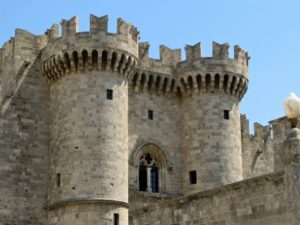Castles in Mainland Greece
Discover Medieval Greece
They stand imposing, proud and carry … on their backs the stories of centuries. If they were able to speak, they would certainly have a lot to say. Castles in Mainland Greece are unique historical monuments.
Byzantine and Medieval Greece
It is estimated that across the country there are over 600 castles, fortresses and towers of differential rhythms. So each county, each region has its own castle, its own trademark.
The castles of Greece are not just a part of the distant past, fortresses that lived in glorious moments only in the Middle Ages, so that after the end of it, they will be silenced, as is the case in almost every other European country. Instead, they have occupied international European politics and a war scene many times in recent history.
A great part of Greek history has unfolded in Mainland Greece. Citadels, temples, castles, Ancient walls, drainage ditches, aqueducts, theatres, tombs, monuments, settlements and cities are found everywhere. Over the years, Mainland Greece has been vigorously fortified and now there are more than 215 castles, towers and monasteries-fortresses whose history dates back to antiquity. Most important and best preserved castles are Nafpaktos, Vonitsa, Lamia, Livadia, Chalkida, Karystos, Kythira and the Acropolis of Athens.
A great number of monuments dating from the Roman and later the Byzantine empire attract thousands of pilgrims and tourists. The majority of the castles found in almost every town of Mainland Greece date back to the era of the Frankish occupation.
As the Ottoman Empire prevailed, Mainland Greece became the base of operations for the fighters of the Greek resistance and revolution.
Fortification settlements around the castles
With a Venetian or Frankish castle center, the settlements grow peripherally in rings, with houses joined together to create a second wall that can protect them from simple pirates attacks.
Examples of such settlements are found in Astypalea, Patmos, Molyvos, Mytilini, Amorgos, Lindos, Rhodes, Skyros.
The defensive system of the fortifications is based on the stifling construction, with the houses next to each other creating the same firewall. The entrance to the settlement is made of large gates, which, in a period of danger, ensure protection. Such settlement is of Serifos, the Castle of Sifnos and Ano Syra. The castle of Naxos Town is one of the rare cases where an engineering design accurately determined the relation of the wall with the mansions and the houses, so that a fortified settlement could be created by them to establish the Venetian Duchy, the seat of all the Cyclades. The work of the first governor of the Duchy, Markos Sanoudos (1207), the castle, built on temple ruins, protected the Venetian colony from the pirates, raiders and the hostility of the locals.


